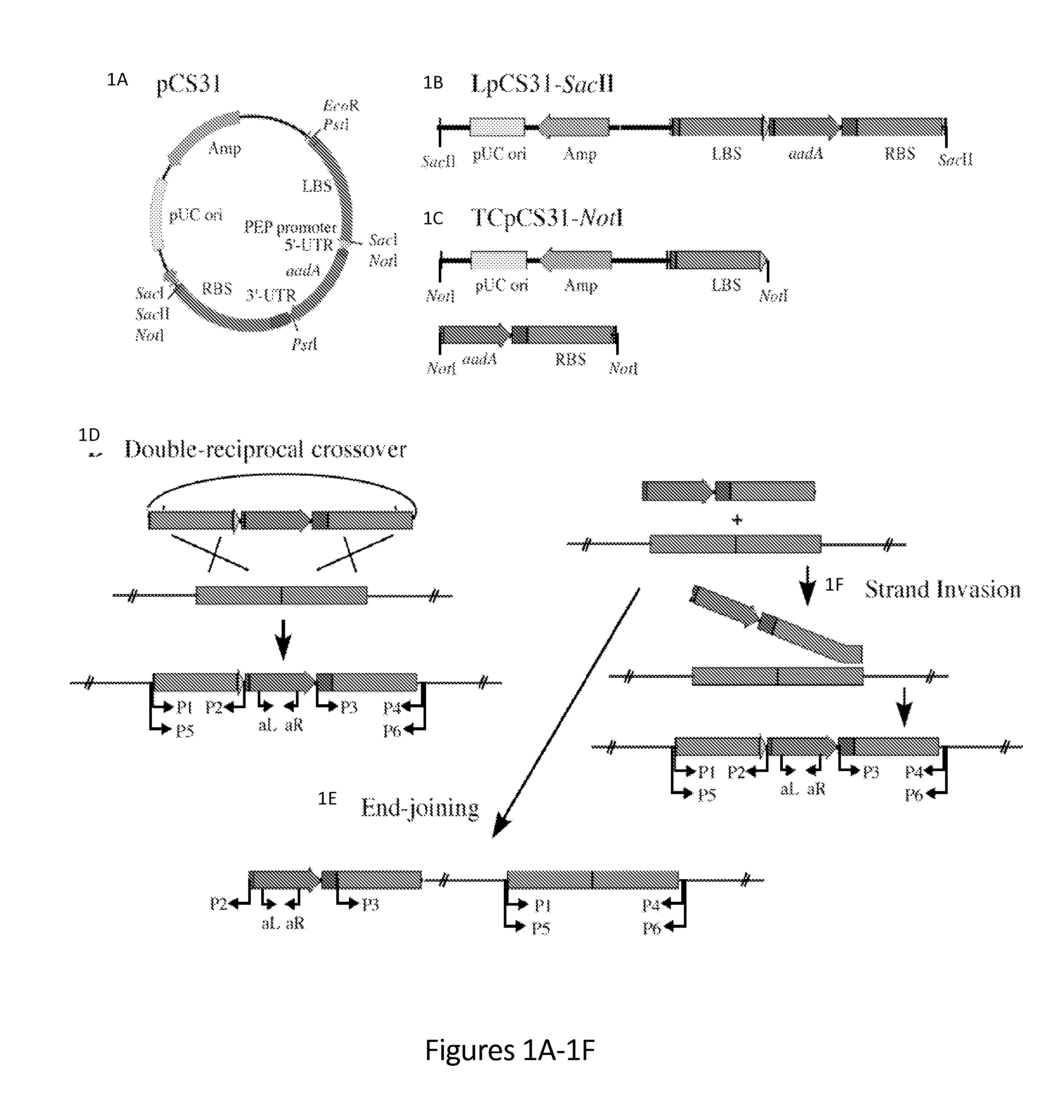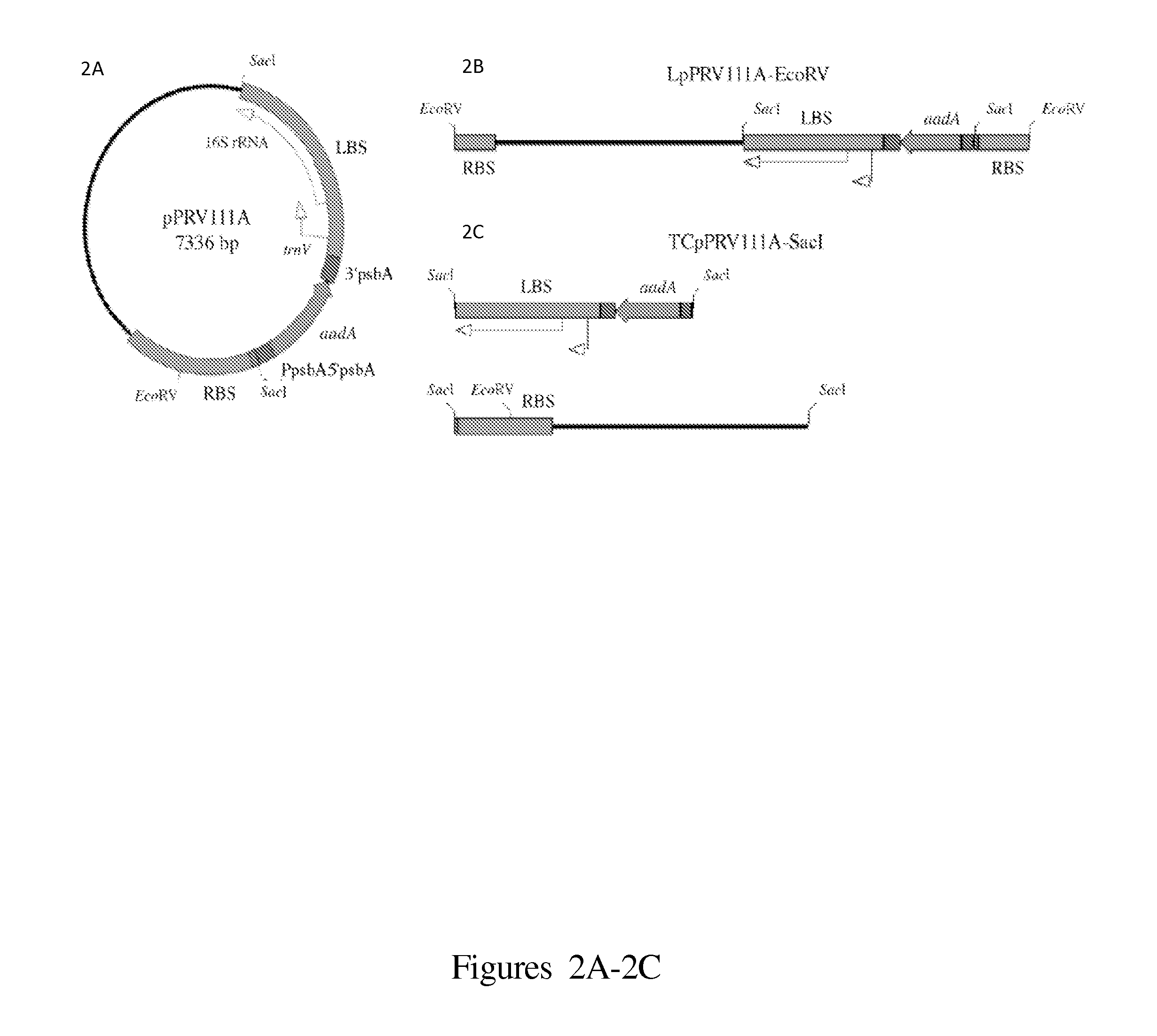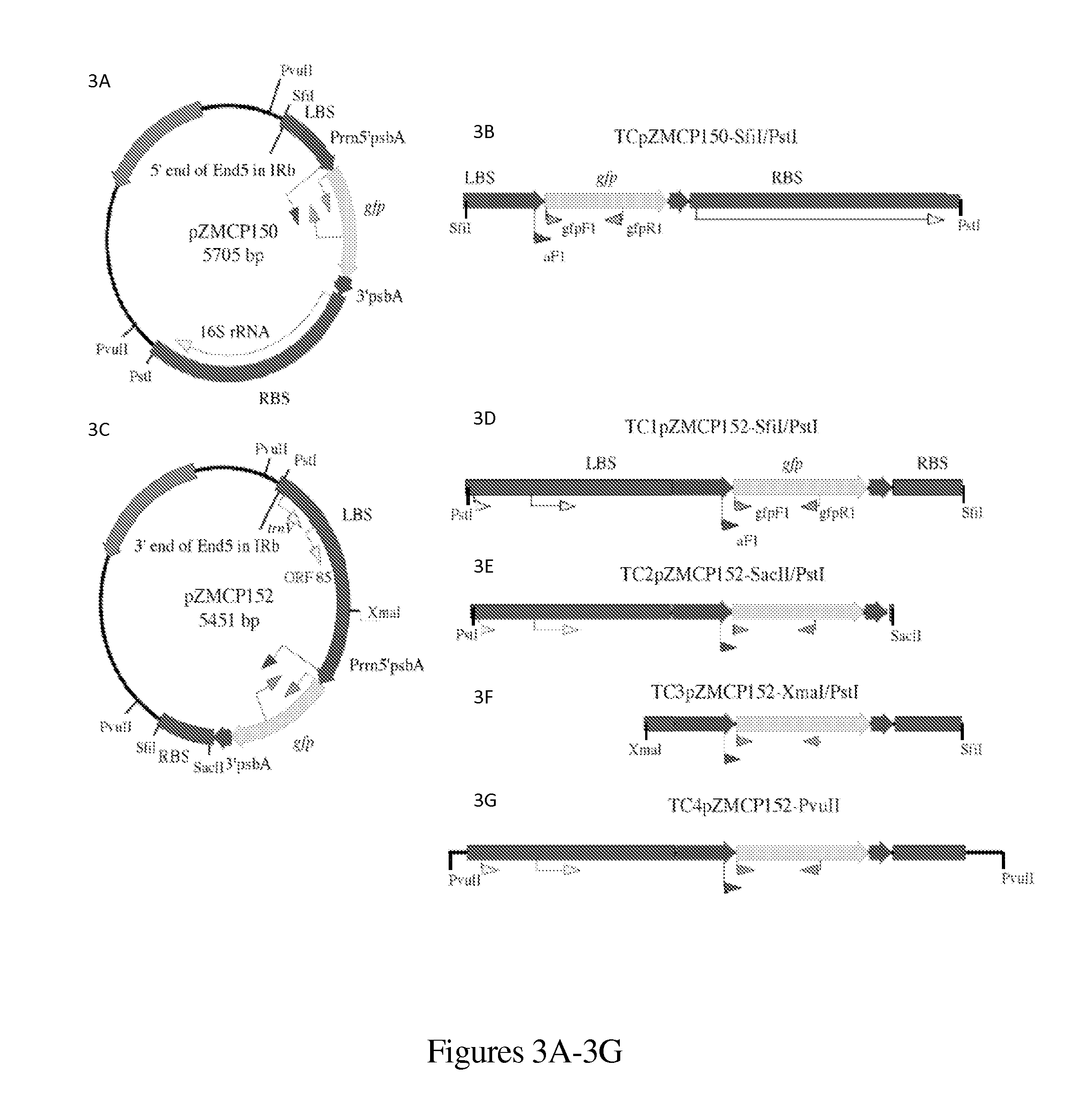Plastid transformation using linear DNA vectors
- Summary
- Abstract
- Description
- Claims
- Application Information
AI Technical Summary
Benefits of technology
Problems solved by technology
Method used
Image
Examples
example 1
Plastid Transformation in Liverwort
[0137]A circular plastid transformation vector, pCS31, and its linearized form were used in transforming liverwort plastids. pCS31 comprises a standard E. coli plasmid (pBluescript II SK+), a right and left border sequence (RBS and LBS, respectively) homologous to a region of the plastid genome, and the transgene (aadA) (FIG. 1A) (Chiyoda et al., Transgenic Res 16:41-9, 2007). The plastid DNA (ptDNA) region corresponds to nucleotides (nt) 83,881-85,894 of IRb and 116,226-118,239 of IRa (GenBank Accession No. X04465) and contains the trnI and trnA genes. Restriction digestion produces a linearized form (LpCS31) with an end at either the RBS or LBS (FIG. 1B) or just the transgene cassette (TCpCS31), which includes one or both border sequences and the transgene (FIG. 1C). For most of the liverwort cell experiments, a TCpCS31 vector containing only RBS plus the transgene was used. The end of the RBS in both LpCS31 and TCpCS31 is ˜3000 bp from the liver...
example 2
Plastid Transformation in Tobacco
[0141]Plastid transformation in tobacco was conducted with young, expanding leaves and older, fully-expanded leaves using both spectinomycin selection (aadA gene) and the visual marker, gfp. Using the aadA vector, a positive transformant was scored as one with some callus-like growth on a leaf segment. Such tissue was either pale-yellow or green with trichomes often protruding from the tissue. The selection medium contained hormones that should permit growth of shoots (in addition to spectinomycin selection); however, no shoots were obtained. Plastid transformation was 4- to 6-fold better with young than older leaves (Table 4). Positive transformants with GFP expression in plastids were also found with the linear gfp vector (images not shown).
[0142]Nicotiana tabacum Petite Havana was grown aseptically in RM agar in a controlled temperature room under continuous light. Leaves of varying age were harvested and measured before placing abaxial side up on...
example 3
Plastid Transformation in Maize, Wheat and Rice
[0144]Plastid transformation vectors for maize that contain ptDNA end sequences and marker transgenes (gfp) were constructed (FIG. 3). The methods used and location of end sequences within the maize plastid genome are described below. Non-green maize tissues (mature embryos and stalk of dark-grown seedlings) as well as wheat and rice tissues (seeds either whole or split open to expose the embryo) were used for plastid transformation by particle bombardment with both circular and linearized vectors. Callus and developing shoot tissues were evaluated for gfp expression a few days after bombardment and tissue samples collected for total tissue DNA (ttDNA) preparation, PCR and blot-hybridization analysis.
[0145]1. Determination of end sequences for maize ptDNA. The size of the plastid genome is 140,387 bp in maize (Maier et al., J Mol Biol 251:614-28, 1995). Plastid chromosomal DNA molecules exist as collection of unit-genome-sized linear is...
PUM
| Property | Measurement | Unit |
|---|---|---|
| Fraction | aaaaa | aaaaa |
| Length | aaaaa | aaaaa |
| Electrical resistance | aaaaa | aaaaa |
Abstract
Description
Claims
Application Information
 Login to View More
Login to View More - R&D
- Intellectual Property
- Life Sciences
- Materials
- Tech Scout
- Unparalleled Data Quality
- Higher Quality Content
- 60% Fewer Hallucinations
Browse by: Latest US Patents, China's latest patents, Technical Efficacy Thesaurus, Application Domain, Technology Topic, Popular Technical Reports.
© 2025 PatSnap. All rights reserved.Legal|Privacy policy|Modern Slavery Act Transparency Statement|Sitemap|About US| Contact US: help@patsnap.com



